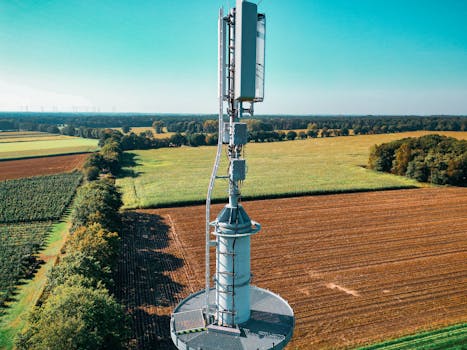
**
BharatNet Phase 3: 1.5 Crore Rural Households to Get Subsidized Broadband Access - A Digital India Revolution
The Indian government's commitment to bridging the digital divide is taking a significant leap forward with the announcement of BharatNet Phase 3. The ambitious project aims to extend subsidized high-speed broadband internet access to a staggering 1.5 crore rural households across the nation. This initiative, spearheaded by the Ministry of Communications, is a crucial step towards achieving the vision of a digitally empowered rural India. The Minister of State for Telecom (MoS Telecom) recently unveiled details of this transformative project, highlighting its potential to revolutionize rural education, healthcare, agriculture, and overall socio-economic development.
BharatNet: A National Broadband Mission
BharatNet, also known as the National Optical Fibre Network (NOFN), is a flagship project of the Digital India initiative. Its primary goal is to provide affordable and high-speed broadband connectivity to even the remotest villages in India. Phase 1 and Phase 2 of the project have already laid a substantial foundation, connecting numerous villages with optical fiber cables. However, Phase 3 represents a significant escalation in scale and ambition, focusing on achieving universal broadband access in rural areas.
Key Features of BharatNet Phase 3:
Massive Expansion: The most striking feature is the sheer scale of the expansion. Phase 3 aims to connect an additional 1.5 crore rural households, significantly increasing broadband penetration in underserved areas. This will directly impact the lives of millions of rural residents.
Subsidized Broadband: The project emphasizes affordability. The government's commitment to providing subsidized broadband access ensures that the benefits of digital connectivity reach even the most economically vulnerable sections of rural society. This makes the internet accessible to a wider population, reducing the digital divide.
Enhanced Infrastructure: Phase 3 involves upgrading existing infrastructure and laying new optical fiber cables to ensure reliable and high-speed internet connectivity. This includes investment in robust network infrastructure, including the deployment of modern technologies to ensure service quality and resilience.
Focus on Last-Mile Connectivity: A key challenge in delivering broadband to rural areas is ensuring effective last-mile connectivity. Phase 3 is designed to address this challenge through innovative solutions, potentially including wireless technologies, to reach even the most geographically dispersed households. This is crucial for ensuring that the benefits reach all corners of rural India.
Digital Literacy Programs: The project goes beyond simply providing internet access. The government recognizes the importance of digital literacy and plans to complement the infrastructure development with comprehensive digital literacy programs to empower rural communities to utilize the technology effectively. This will include training programs targeting various demographics, making internet usage inclusive and beneficial.
Impact on Rural Development:
The implications of BharatNet Phase 3 are far-reaching and transformative:
Education: Access to online educational resources, virtual classrooms, and e-learning platforms can significantly improve the quality of education in rural areas, bridging the learning gap between urban and rural students. Online courses and educational resources will become readily available.
Healthcare: Telemedicine becomes a reality, allowing for remote consultations with doctors, facilitating early diagnosis and treatment, particularly in areas with limited access to healthcare facilities. This improvement in healthcare accessibility will greatly benefit rural populations.
Agriculture: Farmers can access real-time weather updates, market prices, and agricultural best practices through the internet, leading to increased productivity and improved livelihoods. Precision farming and smart agriculture become more feasible.
Economic Empowerment: Broadband access opens doors to online businesses, e-commerce, and other digital economic opportunities, empowering rural entrepreneurs and fostering economic growth in rural areas. This will promote rural entrepreneurship and economic development.
Government Services: Access to online government services, including applications for benefits and other administrative processes, will simplify governance and improve efficiency, reducing bureaucracy and enhancing citizen engagement. This will improve the efficiency and transparency of government services.
Challenges and Future Prospects:
While the project holds immense promise, challenges remain. Maintaining the quality of service, ensuring network security, and addressing the digital literacy gap are crucial for the success of BharatNet Phase 3. Sustained government support, private sector participation, and community engagement are essential to overcome these hurdles and ensure that the project achieves its full potential.
Keywords:
BharatNet, BharatNet Phase 3, National Optical Fibre Network (NOFN), Digital India, rural broadband, subsidized broadband, high-speed internet, rural development, last-mile connectivity, telemedicine, e-learning, digital literacy, agriculture technology, rural entrepreneurship, MoS Telecom, India broadband penetration, rural internet access, optical fiber cables, government initiatives, digital transformation, rural economy.
The successful implementation of BharatNet Phase 3 promises to be a defining moment in India's journey towards a digitally inclusive society. By bridging the digital divide and empowering rural communities with access to high-speed internet, the project holds the potential to unlock unprecedented opportunities for socio-economic progress and transform the lives of millions of Indians. This ambitious undertaking is a significant step towards a truly connected and digitally empowered India.



















